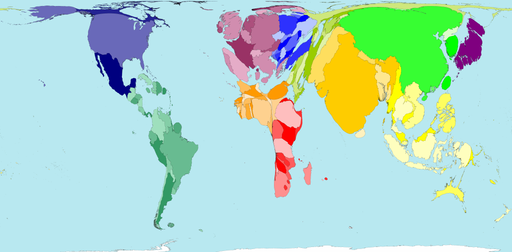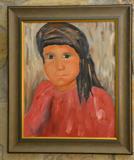Women's empowerment is advocated in America, but why is it so hard to achieve?
American women are publicly encouraged to succeed from both government institutions and private enterprise. President Barack Obama said, "Across the globe there are girls who will one day lead nation, if only we afford them the chance to choose their own destinies." Sheryl Sandberg advocates for women; to "lean in." Yet, according to the Pew Research Center, during and immediately after the State of the Union address, in which the word "women" was mentioned 82, 853 times -- more than any other word -- the overall reaction to his speech on Twitter was negative .
I can't help but wonder, if women are not achieving social and economic parity with men in the Anglo Cluster Countries (USA, Canada, Australia, England, and New Zealand) is it any wonder they fall short of equality elsewhere too in places like China, India and the Middle East? What's preventing women from achieving socio economic rights?
The answer seems unclear at first to the untrained eye. After all, women's suffrage seemed unstoppable in the late 19th century. In the 1970's, women fought for the equal pay for equal work and made great strides. Today, the women's movement calls for a greater influence in politics. True, the pay gap has narrowed significantly for young millennial women -- the first generation to start their work lives at near parity with men at 93 percent to the dollar -- but overall, women continue to struggle for their equal rights, their reproductive and human rights against domestic violence, maternity leave, sexual harassment, and sexual violence. So if, after nearly 100 years of struggle and protest, the Western woman hasn't been able to achieve the desired level of social and economic equality with men, is it any wonder that honor killings, forced abortion, sex trafficking, and child labor still exist in China, India, Northeast and Northwest Africa, and some parts of the Middle East? These reproductive and human rights issues continue to be of catastrophic concern to the World Health Organization . What's more, there is continued opposition to female genital mutilation .

This World Mapper shows how populations rate on the Gender Empowerment Measure.
In many countries, women own nothing, inherit nothing and earn nothing. Three out of four of the poorest billion people of the world are women. The Gender Empowerment Measure is an indicator of opportunities for women. It takes into account the female share of parliamentary representation; proportions of legislators, senior officials, managers, professional and technical employees who are women; and the ratio of female to male earnings. By this measure, women have the most opportunities in Western Europe. The fewest opportunities for women are in the Middle Eastern territories of Yemen and Saudi Arabia. There was no data for any territory in Central Africa.
Male child preference is deeply rooted in patriarchal cultures of India and China producing what's been called the Asian Male Surplus. Traditional practices foster it like the dowry system in India (bride price) reduce the humanity of women to a disposable commodity resulting in fetus sex selection (or selected abortion), violent dowry deaths over "inadequate dowry" mental trauma, bride burnings, induced suicides, physical and mental torture the husband, or in-laws, despite the unenforced "Protection of Women from Domestic Violence Act 2005".
In China, it's perpetuated in two ways: a strong traditional preference by parents for boys plus the One Child Policy. The result is female infanticide and child trafficking to ensure female brides for boys. So, while American women may be quick to sympathize at the detriments of harmful traditional cultural practices, we would be wise to take a closer look at our own hidden patriarchal cultural values prevent us from achieving real liberation. Cultural values may be the culprit for the hindrance of women's empowerment.
Cultural values affect our every waking moment. They are the unconscious drivers responsible for determining what we think and do in ways we never dreamed of. They have little to do with evident culture like food, clothing, customs, or accents. Rather, they are hidden values; the implicit values and assumptions that lie beneath the "cultural iceberg" that account for how we think, process information, view time and relate to others. Understanding them will enable you to not only steer around the unseen and profound dimensions of culture, but understand dilemmas like gender inequalities.
To shed some light on the status of women in the USA and elsewhere, it's useful to apply the Five Dimensions of Culture Index (5-D) -- a cross-cultural benchmark index that describes the effects of a society's culture on the values of its members; and, how these values relate to behavior using a structure derived from factor analysis. The theory has been widely used in several fields as a paradigm model for research, particularly in cross-cultural psychology, international management, and cross-cultural communication.
This "lens" demonstrates cultural differences in comparison to others. They are spectral tendencies, so while people are unique, social control ensures most people don't deviate too much from the norm. Knowing these tendencies provides practical insight into your own culture which can be applied to your daily life in a foreign country, when dealing with foreign clients, and so on.
If we take a look at the MAS Index highlighted above, there are clues as to why women are neither able to lean in from the West nor surmount horrific oppression from the East. MAS Index represents the area of Masculine and Feminine tendencies in cultures. In Masculine cultures, the differences between gender roles are more dramatic and less fluid than in Feminine ones, where men and women have the same values of modesty and caring. In Masculine cultures, the dominant values are achievement and success. It also represents a preference for achievement, heroism, assertiveness, and material reward for success. Society at large is more competitive. On the other hand, Femininity, stand for a preference for cooperation, modesty, caring for the weak and quality of life. Society at large is more consensus-oriented.
According to the 5-D Model, the USA scores relatively high on the Masculine Values (MAS) index: 63 indicating an unequal distribution of emotional roles between the genders. This is a real impediment to American women from achieving social and economic parity. Nordic countries, on the other hand, compared with the USA, score is extremely low: Norway scores 8 and Sweden only 5. In contrast, it's very high in Japan (95) and in European countries like Hungary, Austria and Switzerland influenced by German culture. The implications of these high scores are enormous because the kind of values that are encouraged in America -- by men and women, and understanding this is crucial -- are competitiveness, assertiveness, materialism, ambition and power; tendencies that do not reflect the norms of women .
In the Far East (China), Near East (India) and Middle East (Pakistan) where harmful traditional practices and male preference are favored, the scores are as high as the USA. Young girls are killed, aborted, or abandoned simply because they are girls. The United Nations estimates as many as 200 million girls are missing in the world today because of this so-called "gendercide". Girls who survive infancy are often subject to neglect, and many grow up to face extreme violence and even death at the hands of their own husbands or other family members. The war against girls is rooted in centuries-old tradition and sustained by deeply ingrained cultural dynamics which, in combination with government policies, accelerate the elimination of girls.

It's a Girl, a documentary shot on location in India and China, reveals the issue . It explores why this extreme version of gender disparity happens, and why so little is being done to prevent it. The answer is cultural. The film tells the stories of abandoned and trafficked girls, of women who suffer extreme dowry-related violence, of brave mothers fighting to save their daughters' lives, and of other mothers who would kill for a son. Harrowing to watch, global experts and grassroots activists put the stories in context and advocate different paths towards change, while collectively lamenting the lack of any truly effective action against this injustice.
Desert Flower, a film based on the life of Somali-born model Waris Dirie, also seeks to change the harmful traditional practice of FGM. It's about her journey from pastoral nomad in Somalia to a career in the West as a fashion model, to anti FGM activist . Organizations here in the United States such as the Pastoralist Foundation seek to address these issues too where there are an estimated quarter million women at risk for FGM .
Women's rights are human rights. Cultures with a high masculine tendency and male preference violate both. Aggressive, suppressive, authoritative male values can be, if misguided and abused, more menacing than we can imagine -- even in the land of free women. Our struggle to break the glass ceiling or efforts to lean in may look easier in the West because our obstacles don't feel as injurious or fatal. However, unless there is a shift away from these severe MAS cultural tendencies in the United States, how can we begin to fathom empowerment of young girls and elsewhere?

